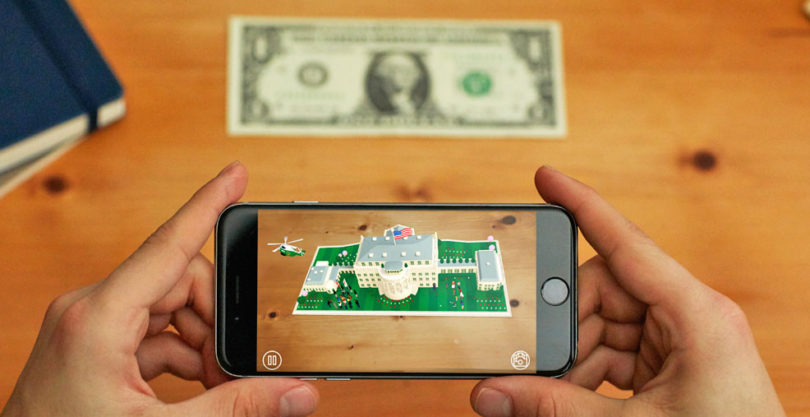In his latest column for B&T, founder of digital marketing agency Shout!Agency Michael Jenkins (pictured below) offers some astute beginner tips for brands keen to get their foot in the burgeoning AR space…
Augmented reality is so hot right now. Front of mind for tech leaders, AR is a disruptive force that will fundamentally change marketing just like the internet and mobile phones have changed how businesses communicate today.
It is vital for businesses to understand what augmented reality is, and how it can enhance your offering, before it becomes over-crowded with competitors.
HOW POKÉMON GO REVOLUTIONISED AUGMENTED REALITY
Pokémon Go influenced retail businesses. For example, one pizzeria placed a small, $100 ad spend on Pokémon Go to lure gamers to their cafe; generating hundreds of visitors.
Essentially, customers came to the store with their mobile devices, and found the lure through their phone. Whilst in store they had the opportunity to also get a slice of pizza – cha ching!
While the game somewhat fizzled out, examples like this show business owners how valuable AR can be for the future of mobile marketing. That is why experts project the AR market value to be around $117.4 billion by 2022.
Even more important, the mobile game opened the floodgates to future Augmented Reality opportunities. Apple wants in and is making strides, and Facebook has touted their own AR mobile platform.
The future will no doubt see billboards and print ads with virtual components where users check out how a product looks on their mobile device.
HOW CAN I USE AUGMENTED REALITY TO MARKET MY BUSINESS?
Virtual demos
One of the biggest uses for AR is turning mobile devices into live product demos. Your mobile device already does this.
For example, luxury watchmaker Jura launched AR as a way for consumers to try on virtual watches as a way to see how these high-end watches look on your wrist. After all, purchasing a watch is an emotional decision – it’s as much about the experience as it is about the product.
Another example is how IKEA experimented with AR functionality to allow shoppers preview how their furniture looks in home and office settings.
AR enhances the digital shopping experience by putting products into consumers’ homes before they make a purchase. AR is the ultimate ‘try before you buy’ experience.
Storytelling – tell it how it is
Augmented reality presents a new aspect where brands can tell their story in a controlled environment.
Just like imagery increased the value of news articles ten years ago, and video adds a personal touch to your marketing, AR further provides an interactive story for marketers.
It is too early to know exactly how this format will take shape, but imagine game-like features as well as interactive content customers can almost touch and feel.
Starbucks started campaigns like this back in 2012. They created the Everylove on Every Cup campaign. Customers accessed a specific Starbucks AR app that scanned their cup, so they could see a personalised Valentine’s Day card come to life.
Information where you need it, when you need it
Augmented Reality will eventually be inescapable.
BMW and Jaguar designed enhanced windshields that provide blind spot and display information that we mere humans might miss while driving.
Imagine these displays combined with self-driving cars. According to experts, self-driving cars should be fully functional in 5-10 years. We can interact with the displays in our cars as we safely move to our destination.
As we go from our home to our cars, we can fully access the web.
It might seem like science fiction now, though cast your mind back 15 years ago when computers were commodore 64s, car phones were ‘mobile phones’ and iphones and tablets were figments of our imagination.
Augmented Reality is the future of digital marketing. As we continue to move away from the static screen, we will have more and more opportunities to interact with the web in our daily lives.
Marketers who want to keep up, need to look at how they interact with this technology now before it goes to the consumer.
Source: Augmented Reality: How, Why & How To Get Ahead Of The Curve – B&T













